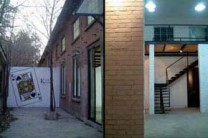Ullens Couple Sold Their Turners at Sotheby for Beijing Contemporary Art Centre
2011-04-15 11:31:21
If you wanted to illustrate the increasingly global nature of the money and influence driving the art world these days, you might invent a wealthy Belgian couple who live in, say, Switzerland, and plan to use the money they made selling a collection of English masterworks (Turner watercolors) to establish a center for contemporary art in Beijing, where one early show will probably feature a well-known German artist.
In a telephone interview this week, Baron Guy Ullens, who, with his wife, Myriam, perfectly fits that description — they sold their Turners, the biggest group to come on the market in more than a century, for $21 million this month at Sotheby’s — hastened to add that he was educated mostly in the United States. And that he is also using his money to set up philanthropic programs for children in Nepal.
Baron Ullens, 72, is to be in New York today to announce details of his plans for one of the largest contemporary art spaces in China, now nearing completion in a former munitions complex in the booming Dashanzi warehouse arts district in Beijing. The center, scheduled to open on Nov. 2, will transform two large factory buildings and a collection of smaller ones into as much as 26,000 square feet of exhibition space, with an auditorium and library.
Baron Ullens, who had business interests in China for many years, has collected contemporary and classical Chinese art with his wife for two decades. The goal of the center, he said, is to provide an exhibition space for artists from around the world but particularly for those from China who are less commercially oriented, at a time when the market for Chinese contemporary art is roaring. He said the couple’s plans for the center evolved as their collection grew and as they began to see the Chinese government’s growing receptiveness to contemporary art.
“I think it’s part of their desire to have world-class cities with lots of services,” he said, adding that, especially with the Olympic Games coming to Beijing in 2008, “I think they’re suddenly very proud of many of their artists.”
But the freedom and flexibility of Western art institutions has still not fully arrived. Last year several galleries in the arts district were ordered by government officials to remove paintings, apparently because they dealt with touchy political themes.
Baron Ullens also explained that he and his wife, known as Mimi, would have to operate the center technically as a commercial space, even though they wanted to run it as a nonprofit. Under the Chinese bureaucracy a nonprofit space would have been more closely overseen by the government. Yet in practice, he said, the center — to be called the Ullens Center for Contemporary Art — will be noncommercial.
Asked whether pieces from his own collection would be exhibited — exposure that could help to increase the market value of the pieces, should the couple decide to sell any — Baron Ullens said yes, adding that a show from the collection is planned during the Olympics, to be held Aug. 8 to 24 next year. But he added that the center’s director and curators would be given great latitude to program the space as they see fit and to choose only the pieces they want from his collection.
“We’re going to try to have as little influence as we can,” he said, adding dryly: “Nobody thinks were doing this for the love or the passion. They think we’re doing it for the money.”
“The key question for us is how do you organize it in such a way that is clean and transparent for everyone — that is what we are doing right now,” he said. He added that while he and his wife, who live outside Geneva, were the only backers for the center now, they planned to seek sponsorships and other financial help later. “It’s painful now,” he said, laughing loudly. “It’s just me and Mimi.”
The center is planning a large opening exhibition that will examine the emergence of a new wave in Chinese contemporary art that emerged in the mid-1980s. It is also planning a show with the German artist Rebecca Horn, and Baron Ullens mentioned interest in an exhibition involving Gilbert and George, the irreverent British pair.
Baron Ullens, whose father was a diplomat in China before his son was born, grew up with a deep love of the country instilled in him by his family, which made its fortune in sugar and other food-related companies, including Weight Watchers. When he had a hand in the family’s firm in the 1980s and early ’90s, he traveled constantly to Asia, where he was trying to expand the business.
“We were not too successful,” he said. “In a way that was my weak spot in business. But I started meeting young artists and traveling with them on weekends. It was a golden time really.”
“They were very professional but not at all commercial at that time,” he said. “Some might have been producing 10 pieces a year. There was no market, no Sotheby’s or Christie’s in this field then.”
Now, he said, even with his wealth he can no longer afford some of the most sought-after pieces coming onto the market, from artists like Wang Guangyi and Zhang Xiaogang. And even having a huge, sleek space in Beijing is no guarantee that he will be able to attract those artists and others to take part in shows. “There’s a lot of competition,” he said. “We’re learning, learning every day.”
“The key problem is going to be to keep the quality of the art very high,” he added. “Are we going to be good enough to survive? I don’t know.”

 黄琦
黄琦 测试用艺术
测试用艺术
